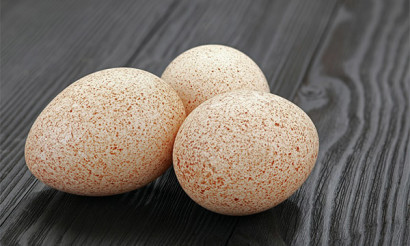Omelette: useful properties and contraindications
Perhaps it is rare to meet a person who has never tasted a dish made of eggs. Omelette was given to the world by French cooks, who obtained it by mixing eggs and milk.
- What is an omelet
- Types of omelets
- What is the difference between an omelet and scrambled eggs
- Composition and Calories
- How to use scrambled eggs
- General benefits
- For Women
- For Men
- In Pregnancy
- Breastfeeding
- For children
- Can I Eat Scrambled Eggs to Lose Weight
- Omelet in medicine
- For diabetes
- For pancreatitis
- For gastritis
- For constipation
- For gout
- For colitis
- For hemorrhoids
- Pri cholecystitis.
- Health Hazards and Contraindications
- Recipes for making omelets
- In the Pan
- In the oven
- Steamed
- In the microwave
- In the Multicooker
- Omelet without Milk
- Shelf life of scrambled eggs
- Can I have scrambled eggs every day?
What is an omelette?
Today, omelet is called the finished result of cooking mixed or whipped eggs. The classic version of the dish is cooked in a frying pan with an open lid with the addition of butter. It is fried on both sides. It is served curled up, and stuffing can be added before serving.

Modern omelet recipe also includes milk. The finished dish should be puffy, which can be fried with the lid closed or baked in the oven.
Types of omelets
The ingredients for the omelet are eggs, egg powder or melange, milk (15 g per egg) and a pinch of salt. The components are thoroughly mixed. Ready-to-cook egg mass has a slightly foamy surface.
There are several types of omelettes:
- Natural. For its preparation, a cast-iron skillet is used, and the mass itself at the end of frying is curled around the edges.
- Mixed. It differs in the stage of mixing the ingredients - in the liquid egg mass is added to the filling (vegetables, meat, mushrooms, cheese), and then cooked by analogy with a natural omelet. To make an omelet with cheese, cheese shavings are added to the egg mixture before being poured onto the pan.
- Stuffed. This dish can be prepared with a vegetable or meat side dish. The filling (stewed vegetables, finely chopped meat, liver or minced meat) is prepared in advance. An important point at this stage is the presence of sauce (sour cream is used more often). Stuffing mixture is placed in the middle of the egg mixture slightly thickened in the pan, and its edges are folded inward on both sides.
- Sweet. Sweet omelette is prepared with the addition of sugar, grated lemon and spices. This dish is a variation of stuffed omelette. Berries, jam, confit, jam are suitable for stuffing. Powdered sugar is used to decorate the finished dish.
- Baked. The omelet mass is first thoroughly whipped, and then baked in an oven heated to 180 ° C. This method is often used to prepare a large number of portions. You can also bake omelet with side dishes (potatoes, porridge, meat, vegetables).
- Dracena - Separate dish similar in cooking to the omelette. The only difference is the ingredients: eggs and milk are mixed with flour and sour cream. More often than not, the drachenna is cooked in the oven.
What is the difference between an omelet and scrambled eggs?
The main difference between omelets and scrambled eggs is the use of liquid (water, milk or cream). Also, when making an omelet, the egg mixture is stirred, while for scrambled eggs it is important to maintain the integrity of the yolk.
There are several other differences. For example, in scrambled eggs are most often beaten directly into the pan, whereas in an omelet the ingredients must be mixed in a separate container beforehand. In addition, the omelet is important for its puffiness, which is why it is mostly cooked with the lid closed, unlike scrambled eggs. The latter dish is never sweet, and the omelet can be cooked as a dessert.
Composition and calories
The approximate caloric value of an omelet is 184 kcal/100 g, but there may be slight deviations from this value depending on the method of preparation. The protein/fat/carbohydrate ratio per 100g serving is 8.3/7.9/2.9.
Omelets are a very popular dish for a reason. The composition is rich in choline, vitamins A, B, and D, micronutrients such as fluoride, iodine, chlorine, iron, copper, and sulfur. The ratio of nutrients characteristic of the omelet helps to strengthen and maintain the elasticity of joints and ligaments, provides normal conduction of nerve fibers, and improves the peristalsis of the stomach and intestines.
What are the benefits of scrambled eggs
General benefits
This dish is rich in protein, so it promotes muscle growth. People who lead an active lifestyle or whose work is connected with increased physical exertion, it is recommended to include scrambled eggs in the daily diet.

The composition of the dish, thanks to a combination of vitamins A, B and E, provides strengthening of the skin and the production of elastin and collagen, nourishes the retina. Thanks to milk, if it is part of the omelet, the body receives and easily absorbs phosphorus and calcium, which are important for strengthening bones, heart walls, as well as hair and nails. Free radicals combined with the minerals in the omelet prevent premature aging and have a positive effect on all metabolic processes in the body.
Important! Eat only fresh eggs. Before breaking the shell, it is advisable to wash them thoroughly to prevent the entry of harmful microorganisms in the finished dish.
For women
Vitamins A and E in the composition of the omelet strengthens the health of women. These substances not only normalize the ovaries, but also make hair and nails strong, and the skin - firm.
For men
Men benefit from eating scrambled eggs as a source of protein. Its large amount in a dish allows you to build muscle mass, while not lacking in mineral components.
When pregnant
If a woman does not suffer from food allergies to eggs, she can safely include an omelet in her diet. Protein and vitamins, which are important for normal fetal development, are easily absorbed from the omelet. In addition, the dish contains choline, which is an important component that affects the development of the nervous system of the embryo. The only caveat is that pregnant women should not eat a fatty omelet. Milk can be replaced with water with a few drops of vegetable oil, preferably olive oil.
When breastfeeding
It is not advisable for a nursing mother to eat omelet in the first three months of the baby's life. This can contribute to the formation of allergies in the baby, and also carries an additional load on the unformed digestive system of the baby. After 12 weeks from the birth, you can start introducing eggs into your diet. It is important to do this gradually, to monitor the reaction of the baby. It is better to start with eggs from the category of dietary products. They are marked with a "D" on the shell and are more thoroughly tested before they are shipped to stores.
For children
It is recommended that children be introduced to the diet of omelets from the age of 1.5 years. Earlier experiments can negatively affect the digestive process and cause indigestion. In addition, eggs are quite an allergenic product, so it is important to monitor the reaction of the baby's skin after the meal. For children of preschool and early school age, it is preferable to prepare steamed omelets or baked in the oven. This allows you to prepare a tender and fluffy dish, as well as preserve the maximum nutrients in the product.
Is it possible to eat an omelet while losing weight
It is noteworthy that even in the most stringent diets there are omelets. The rich vitamin and mineral composition of this dish allows you to maintain a normal level of useful substances in the body in conditions of nutritional deficit. To promote weight loss by eating an omelet, rather than the other way around, you should avoid meat additives and frying with vegetable fats.
The most dietary is considered to be an omelet based on proteins alone. Naturally, a steamed dish will bring more benefits to the body than a fried one.
Omelet in medicine
Like any product, omelets should be used thoughtfully, taking into account the peculiarities of the body, food tolerance, as well as contraindications for various diseases.

For diabetes mellitus
With such an ailment, a dietary omelet is useful and even recommended for consumption. This dish will serve as a source of protein, in addition, it contains an acceptable percentage of carbohydrates.
Important: The glycemic index of an omelet is 50 units.
With pancreatitis.
Since fried dishes stimulate the secretion of digestive enzymes, with pancreatitis it is allowed to eat only an omelet cooked on steam or in a multicooker. You should also modify the classic recipe, replacing milk with water.
If the disease is exacerbated, yolks should be excluded from the omelet, because they contribute to the aggravation of pain. The norm of eggs in pancreatitis is two per day. You can use not only chicken, but also quail, goose, turkey and duck eggs.
Gastritis
During periods of exacerbation of the disease, steamed omelet with the addition of water can serve as a real salvation. He envelopes the mucous membrane of the stomach and helps to reduce inflamed foci. With an illness in a particularly acute form, you can cook an omelet on proteins.
With constipation.
Problems with intestinal patency and its peristalsis can worsen if you eat fried omelet. Also, dishes stuffed with meat and vegetables can make it difficult to defecate, so they should be excluded from the diet. Steamed dietary omelets are allowed.
If you have gout
Gout is an ailment in which following a diet is extremely important. Omelets are allowed, but the portion size per day should be limited to 75 grams. Consumption of a diet or protein omelet is also recommended to fit into this norm.
In colitis.
The diet to be followed in colitis should be aimed not only at eliminating all intestinal irritating foods, but also at observing the nutritional content of the dishes. Eggs in boiled, raw or fried form in colitis are strictly forbidden. But steamed omelet, cooked in water, not only allowed, but also recommended to include in the diet. It is important to observe the norm - 2 eggs a day.
In hemorrhoids
The exacerbation of hemorrhoids entails the need for strict dietary restrictions. During such periods, it is better to give up omelets. In moderate periods of the disease allowed omelets, which lack the yolk.
In cholecystitis
Cholecystitis requires the patient to eat foods containing as little cholesterol as possible. Therefore, omelets should be eaten only protein. Allowed to eat ½-1 yolk a day, which is a component of casseroles or cutlets.
Harms and contraindications
Provided that there is no allergy to eggs, only fried omelets can cause potential harm to the body. Egg yolks contain a minimal amount of cholesterol, which can only show its slight negative effects if consumed in large quantities. The more oil and vegetable fats used to make an omelet, the less nutritional value the finished dish will have.
People prone to allergic reactions may observe manifestations of food allergies when eating this dish in excess.
How to cook an omelet: recipes
The recipe for this dish is quite simple. Omelet can be cooked in different ways, with the maximum nutritional value retained when using the steam method.
In a frying pan
The classic omelet is cooked exactly in a frying pan. It is important to use fresh eggs at room temperature.

To prepare one portion of a nutritious dish, you will need two eggs, 50 ml of milk, spices, salt to taste and a little vegetable oil.
First of all, you need to heat a frying pan, then grease it with oil and pour the mixture of eggs with milk and spices, which has been previously stirred or whipped. After 3 minutes of cooking on medium heat, turn it to minimum, cover the mass with a lid and simmer for another three minutes. The omelet turns out slightly solid. If desired, you can flip the egg pancake and fry the other side for a few minutes. Sprinkle greens on the finished dish.
In the oven
The opulence of an omelet cooked in the oven depends on the proportions of eggs and milk. One egg usually takes 50 ml of milk.
To make an omelet in the oven, break 10 eggs in a bowl with milk (500 ml), salt. Stir the mass without beating it. Grease a high-sided baking dish with butter and fill the egg mixture, leaving 1/3 of the sides of the dish unfilled. Bake for 30 minutes at 200°C. Do not open the oven for the first 20 minutes, as the omelette may settle.
Steamed
Steamed omelet is included in most diets. Such a dish is prepared for children and people suffering from diseases of the gastrointestinal tract. Steamed omelet maximally preserves all the nutrients of eggs and milk, and is also a low-calorie dish, which is prepared as follows.
Pour the prepared egg mass into the molds and place in a steamer or on a metal colander lowered into a saucepan filled with boiling water to 1/3. Water should not touch the forms with omelette. Approximate cooking time is 15 minutes. Milk can be replaced with sour cream mixed with cold water (30 g of each product for 2 eggs).
In the microwave
After mixing eggs with milk according to the classic recipe, you can cook an omelet in the microwave. For this, it is better to use a deep container, so that the raised mass does not come into contact with the walls of the microwave.
In the multicooker
Eggs mixed with milk, salt and add spices. To grease the bowl of the multicooker will need a small amount of oil. To prepare a fluffy dish, you can whip the whites separately and then pour them into a common container. On the device set the mode "Baking" with a cooking time of 20 minutes. After this period, turn off all modes, including heating, and let the omelet stand with the lid closed for 5-10 minutes.
Omelet without milk
If you want to make an omelet, but did not have milk, you can replace it with water in a smaller amount. In this case, you will need to stir the mixture more thoroughly. You can also add a few teaspoons of semolina, it will add thickness to the egg mixture. Milk can be replaced by cream or sour cream, mixed with water in a ratio of 1:1. The main thing is that the amount of liquid component per 1 egg equals 50 ml.
Shelf life of cooked omelet
The finished dish is not subject to long-term storage. Although it can be frozen and then reheated if necessary, in this case, the taste qualities will be lost. Cooked omelet can be taken on the road, provided that it is placed in an airtight container. Note, however, that the maximum shelf life of an omelet is 12 hours. In the refrigerator you can store the finished dish for 3 days, provided it is placed on the shelf for perishable products.
Shelf life of the egg mixture
The mass prepared for the omelette should not be stored for a long time. It should be used for cooking within a few hours.
Can I have scrambled eggs every day?
Eggs are quite an allergenic product, so you should not eat one omelet. The daily norm of an omelet per person is 200 grams. To reduce the risks from overeating this dish, you can use only proteins for cooking.
«Important: All the information on this site is provided solely for introductory purposes. Consult a specialist before applying any recommendations. specialist. Neither the editors nor the authors are liable for any possible harm caused by materials."




















